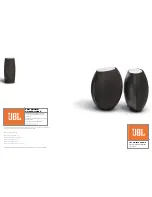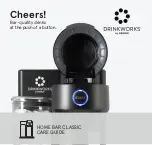
TIG TROUBLESHOOTING
1. Tungsten burning away quickly
•
Incorrect Gas or No Gas.
Use pure Argon. Check cylinder has gas, connected, turned on and torch
valve is open.
•
Inadequate gas flow.
Check the gas is connected, check hoses, gas valve and torch are not restricted.
•
Back cap not fitted correctly.
Make sure the torch back cap is fitted so that the O-ring is inside the
torch body.
•
Torch connected to DC+.
Connect the torch to the DC- output terminal.
•
Incorrect tungsten being used.
Check and change the tungsten type if necessary.
•
Tungsten being oxidised after weld is finished.
Keep shielding gas flowing 10–15 seconds after arc
stoppage. 1 second for each 10 amps of weld current.
2. Contaminated tungsten
•
Touching tungsten into the weld pool.
Keep tungsten from contacting weld puddle. Raise the torch so
that the tungsten is off of the work piece 2 - 5mm.
•
Touching the filler wire to the tungsten.
Keep the filler wire from touching the tungsten during
welding, feed the filler wire into the leading edge of the weld pool in front of the tungsten.
3. Porosity - poor weld appearance and colour
•
Wrong gas / poor gas flow /gas leaks.
Use pure argon. Gas is connected, check hoses, gas valve and
torch are not restricted. Set the gas flow between 6-12 l/min. Check hoses and fittings for holes, leaks etc.
•
Contaminated base metal.
Remove moisture and materials like paint, grease, oil, and dirt from base metal.
•
Contaminated filler wire.
Remove all grease, oil, or moisture from filler metal.
•
Incorrect filler wire.
Check the filler wire and change if necessary.
4. Yellowish residue / smoke on the alumina nozzle & discoloured
tungsten
•
Incorrect Gas.
Use pure Argon gas.
•
Inadequate gas flow.
Set the gas flow between 10 - 15 L/min flow rate.
•
Alumina gas nozzle too small.
Increase the size of the alumina gas nozzle.
5. Unstable Arc during DC welding
•
Torch connected to DC+.
Connect the torch to the DC- output terminal.
•
Contaminated base metal.
Remove materials like paint, grease, oil, and dirt, including mill scale from
base metal.
•
Tungsten is contaminated.
Remove 10mm of contaminated tungsten and re grind the tungsten.
•
Arc length too long.
Lower torch so that the tungsten is off of the work piece 2 - 5mm.
6. Arc wanders during DC welding
•
Poor gas flow.
Check and set the gas flow between 10 - 15 L/min flow rate.
•
Incorrect arc length.
Lower torch so that the tungsten is off of the work piece 2 - 5mm.
•
Tungsten incorrect or in poor condition.
Check that correct type of tungsten is being used. Remove
10mm from the weld end of the tungsten and re sharpen the tungsten.
•
Poorly prepared tungsten.
Grind marks should run lengthwise with tungsten, not circular. Use proper
grinding method and wheel.
•
Contaminated base metal or filler wire.
Remove contaminating materials like paint, grease, oil, and
dirt, including mill scale from base metal. Remove all grease, oil, or moisture from filler metal.
7. Arc difficult to start or will not start DC welding
•
Incorrect machine set up.
Check machine set up is correct.
•
No gas, incorrect gas flow.
Check the gas is connected and cylinder valve open, check hoses, gas
valve and torch are not restricted. Set the gas flow between 10 - 15 L/min flow rate.
•
Incorrect tungsten size or type.
Check and change the size and or the tungsten if required.
•
Loose connection.
Check all connectors and tighten.
•
Earth clamp not connected to work.
Connect the earth clamp directly to the work piece wherever possible.
FAQ & TROUBLESHOOTING
43
Summary of Contents for RAZOR 320 AC/DC
Page 1: ...RAZOR 320 AC DC KUMJRRW320ACDC Operating Manual...
Page 2: ...2...
Page 45: ...NOTES 45...
Page 46: ...NOTES 46...
Page 47: ...NOTES 47...






































